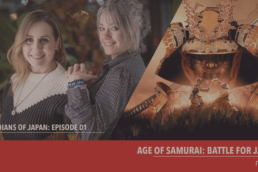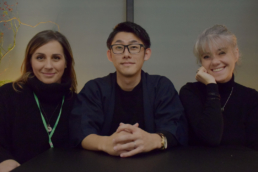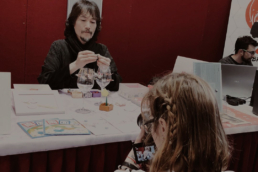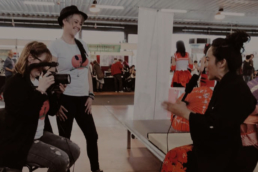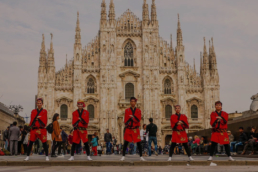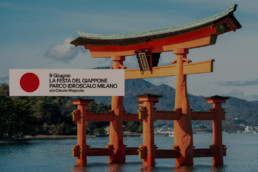Sake: Three Fun Facts About Japan's Iconic Drink
Sake is more than just an alcoholic beverage; it is a true piece of Japanese culture, closely tied to the history, traditions, and even spirituality of the Land of the Rising Sun. Although it is often referred to as “rice wine,” its production is unique and its significance goes far beyond simple taste. When talking about rice-based beverages, the ideogram sake [酒] generally refers to alcohol, but is pronounced shu. When the Japanese talk about beverages made with rice, they use the term nihonshu [日本酒], which means “drink of Japan.”
Now, get ready to discover three fascinating facts that will make you see sake in a whole new light!

1. Sake is not a distilled beverage
Many people believe that sake is similar to liquor or spirits, but in reality, its production process is closer to that of beer. The rice used is first polished to remove impurities, then steamed and fermented using a special fungus called koji. This turns starches into sugars, allowing the yeast to start the alcoholic fermentation.
The result? A drink with a complex and delicate flavor, with an alcohol content of between 13% and 16%. And if you thought there was only one type of sake, think again: there are lighter, unfiltered, sparkling and even aged varieties!

2. A connection to the sacred
Sake is not only a pleasure for the palate, but also a deeply rooted element in Japanese religious traditions. Ancient legends say that even the gods appreciated it: the storm god Susanoo-no-Mikoto is said to have defeated a dragon by offering it eight barrels of sake.
To this day, the drink is still used in Shinto rituals, especially at weddings and in offerings to the kami (Japanese deities). During some festivals, such as the Doburoku Matsuri, unfiltered sake is distributed to participants, creating a link between the sacred and conviviality.

3. Sake etiquette
It is not enough to fill a glass and drink, sake has a real code of conduct. Traditionally, it is drunk in small ceramic cups (choko) or in elegant wooden boxes (masu). But there is one golden rule: never pour it yourself! It is an impolite gesture, while pouring it for others is a sign of respect and sharing.
Temperature also matters: in the winter it can be enjoyed hot, while in the summer months it is more appreciated fresh or even cold. Each serving method brings out different aromas, making each sip a unique experience.
A toast to tradition!
Sake is not just a drink, it is a journey into Japanese culture. Next time you have the opportunity to taste it, remember to raise the cup and toast with a traditional "Kanpai!" – and maybe surprise your friends with these curiosities!
Our relationship with Sake
Japan Italy Bridge has often dedicated itself to the promotion of sake, carrying out numerous initiatives, including the Bunka Academy. The goal was to raise awareness in Italy of how to appreciate sake, emphasizing that it is not a grappa, but a real wine. It is not a drink to be consumed only at the end of a meal, but to be enjoyed throughout the dinner. Unlike wine, sake does not cover the flavors of dishes, but enhances them. For this reason, Japan Italy Bridge has organized events in collaboration with Japanese experts, who have shared with the public the history, the production process and the secrets of consuming and preserving sake.
If you are curious, we invite you to take a look at our portfolio and discover all the collaborations we have carried out.
Guardians of Japan - Episode 01: "Age of Samurai: Battle for Japan" review
Here we are again with a new web series by Japan Italy Bridge! As you know, we aim to communicate and promote Japanese culture and companies in Italy and vice versa.
Since it is not possible to travel in this period, we have decided to try to shorten the distance between Italy and Japan even more by telling you not only about our experiences but also by sharing what we know about the Land of the Rising Sun.
We have already produced a web series dedicated to the promotion of Japan here in Italy called "Bringing Japan to Italy" and now we start with this new series dedicated to the history of Japan and mainly to those figures that fascinate us Westerners: the Samurai. For those who have been following us for some time, you already know that we have a fairly rich column on this subject on our blog and now we have decided to delve into it all through a video podcast.
So at each episode we are going to analyse the life and adventures of Japan's most important Samurai and we decided to dedicate the first episode to the review of the TV series "Age of Samurai: Battle for Japan" that you can find streaming on Netflix! We had already anticipated the arrival of "Age of Samurai" on Netflix and now after a full immersion we are ready to tell you what it is about, our impressions and also some curiosities!
We hope you enjoy this first episode and we are really curious to receive your feedback. Stay tuned because in the next episodes not only will you be able to discover the true history of Japan, but there will also be many surprises waiting for you, enjoy!
Authors: Erika Panzeri, Angie Antenucci // Japan Italy Bridge
Editing: Erika Panzeri // Japan Italy Bridge
Some of the footage in the video is owned by Netflix, we do not claim property of that footage.
Bringing Japan to Italy: episode 10 - Hoshitaro Asada
Our feature 『Bringing Japan to Italy』 is back with episode number 10 dedicated to Hoshitaro Asada, who works at the Sogen sakagura in Ishikawa in Japan.
His mission is not only to produce one of the best sake in the world, but also to spread Japanese culture internationally. He told us about the similarities between Italy and Japan and how Italians see and live the world of sake.
Bringing Japan to Italy: episode 09 - Codice Bianco
A few months ago, in conjunction with the Novegro comics festival, we had the opportunity to interview Codice Bianco. For this ninth episode of 『Bringing Japan to Italy』, the artist specializing in sculptures and origami speaks to our microphones.
Codice Bianco kindly granted us this exclusive interview for Japan Italy Bridge to help promote and share more and more Japanese culture. Furthermore, we talk about how the art of creating origami has spread in Italy over the last ten years.
Special Thanks: Associazione Ocha Caffè
Bringing Japan to Italy: episode 08 - Alex Kerr
In conjunction with the release of his book "Lost Japan", Alex Kerr held a conference at the Palazzo Reale in Milan. We at Japan Italy Bridge had the opportunity to meet him and ask him some questions.
In this episode 8 of our Bringing Japan to Italy series, Alex Kerr tells us about his secret Japan. Son of an American navy family, from a young age he travels the world between Italy, Japan, USA, and then returns to the land of the Rising Sun. Since his college years, Alex Kerr has made Kyoto his life base.
Here he discovered a new world, a Japan that we Westerners can hardly see. A country made of traditions, small villages and thatched-roof houses with antique wood floors. He tells us how his life has changed thanks to winning the Scincho Gakugei literary prize. As a result, Alex Kerr came into contact with a group of Litterti and Japanese artists with whom he still collaborates today.
But now we leave you with the words of Alex Kerr and his secret Japan. Enjoy the video!
Special Thanks: Associazione Giappone in Italia
Lost Japan: Amazon US
Bringing Japan to Italy: episode 07 - Yoko Takada
A few months ago, in conjunction with the Novegro comics festival, we had the opportunity to interview Yoko Takada. For this seventh episode of 『Bringing Japan to Italy』, the artist specializing in Japanese culture, tea ceremonies, Kimono dressing and much more speaks to our microphones.
Yoko Takada has kindly granted this exclusive interview for Japan Italy Bridge to help promote and share more the Japanese culture. Furthermore, we talk about the similarities between Japan and Italy, and why the bow is so important in the land of the rising sun. Did you know that? Enjoy the video!
Bringing Japan to Italy: episode 06 – Takarabune
A few months ago, in conjunction with the Japan Matsuri in Bellinzona, we had the opportunity to interview one of the very few Awa Odori dance troupe: Takarabune!
The Awa Dance Festival (阿波踊り), the largest dance festival in Japan, is held from August 12th to 15th as part of the Bon Festival in Tokushima prefecture of Shikoku in Japan.
The earliest origins of this style of dace are found in the Japanese Buddhist priesthood dances of Nembutsu-odori and hiji-odori of the Kamakura period (1185 – 1333), and also in the kumi-odori, a lively crop dance that was known to last for several days.
The Takarabune group has been traveling the world for years to bring joy and to share the culture of Japanese festivals with all other foreign nations.
In an exclsive interview for Japan Italy Bridge they tell us how they see the relationship between Italy and Japan and their thoughts on our beautiful country. Enjoy!
Follow Takarabune
Website: takarabune.org
Facebook: facebook.com/Takarabune.official
Instagram: @takarabune_official
Twitter: @Takarabune_info
Festa del Giappone @ Circolo Magnolia

On June 9, 2019, at the Circolo Magnolia located at Parco Idroscalo, an entire day dedicated to Japanese culture will be held. There will be many workshops, demonstrations and important personalities known in the world of the Rising Sun. Obviously, you can also taste the coveted Japanese food and sake.
Many are the workshop available for the audience! You can find the manga drawing workshop curated by Giappone in Italia, focusing mainly on the character design. Furthermore, you will find the Lykke Anholm workshop, the Italian ambassador of the KonMari method, focusing on the whole philosophy underlying the worldwide phenomenon of Marie Kondo. Also, have you ever heard of Kintsugi? It’s the ancient and very significant Japanese art of repairing ceramics with urushi lacquer and gold dust. The restorative artist Chiara Lorenzetti will explain this in the smallest detail.
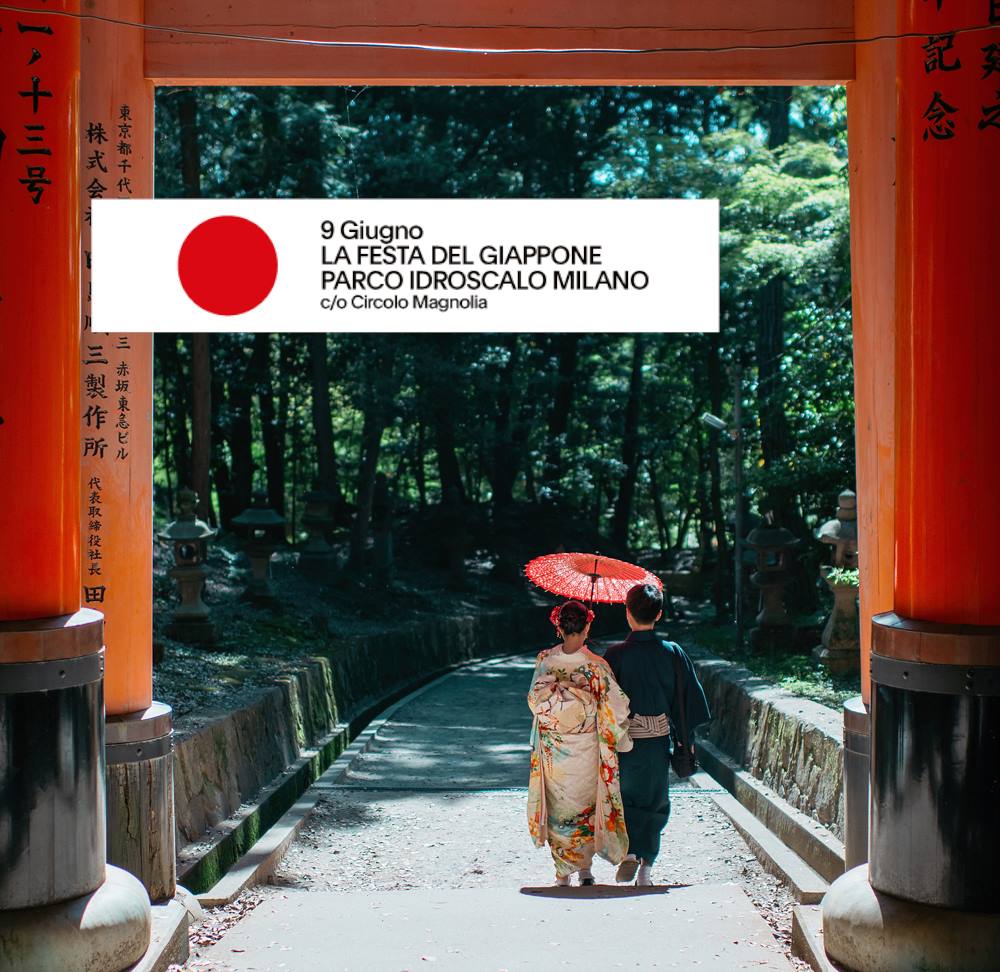
A dive into Japanese tradition with some demonstrations, including the Yukata Dressing by Mamiko Ikeda and the evocative Tea Ceremony by Alberto Moro. IFIORINELLARETE takes care of the demonstration of Kokedama, a technique in which a seedling is removed from its own pot and wrapped in a ball made with a mixture of different substrates, covered with fresh moss. The plant created can be placed on a flat surface, or left floating in the air for an even more suggestive effect. The famous Keiko Irimajiri will present her Bentō Showcooking while Luca Vecchi will tell us about the concept of his work Okaa-Sama | Honorable Mother.
And for all the people that love the Japanese language, Eurasia Language Academy will hold An interactive language course! Curious?
We’ll be waiting for you on June 9th at Circolo Magnolia, Parco idroscalo. We’ll be there, what about you??

Info & Prevendite
Pre-sale: bit.ly/Prevendite_LaFestaDelGiappone
Organisation: Associazione Culturale Giappone in Italia
Website: www.giapponeinitalia.org
Mail: info@giapponeinitalia.org









